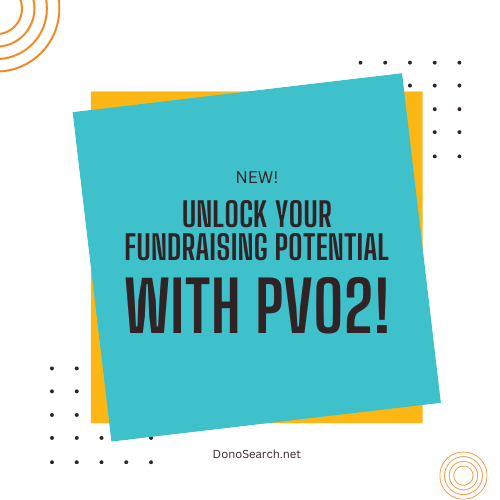
Nonprofits: The Key to Ending First Quarter Blues? Personalization
The new year is here. All around the country, millions and millions of consumers just engaged with beloved brands, both new and old. Spreading the holiday cheer, they exchanged gifts with friends and loved ones.
Although many of our decorative lights are still up and the children are finally trickling back to school from winter break, something peculiar is happening. And it’s a result of all of that holiday shopping. Unsatisfied with their fourth quarter sales, many smart companies in the for-profit economy have begun a campaign of text and email to turn those seasonal customers into engaged brand supporters—all year long.
The question to nonprofits is simple. Are you satisfied to let corporations dominate your community’s hearts and minds for the next quarter, or do you want to do something about it? After all, the fourth quarter’s importance is something nonprofits share in common with businesses. Consider this. Many companies make most of their profits at this time.
This is why the busiest shopping day of the year is Black Friday—it marks the day retail companies become profitable or “in the black.” For nonprofits, the fourth quarter is also the most critical period for fundraising.
Now that we are past 2022’s fourth quarter, corporations are already wielding a secret weapon to form strong bonds with consumers. Their goal? Creating deeply engaged relationships resulting in increasing revenue. That weapon is personalization.
Consumers expect it, and nonprofits that don’t start to use it effectively are likely to be left behind. Marketing and email powerhouse Mailchimp explains the power of personalization this way: “Personalized marketing is much more than just inserting the customer name into the same marketing email that goes to all of your customers. It’s about reaching the right person with the right message at the right moment with the right suggestions.”
You’ve likely been on the receiving end of personalized marketing. Turns out consumers overwhelmingly prefer to be communicated with in this way. In fact, significant research by software giant Salesforce shows that 52% of consumers expect all offers to be personalized.
As might be expected, this development has become a thorn in the side of nonprofits. In recent years, corporations have blurred philanthropic lines in their altruistic missions. Companies like Ben & Jerry’s and Patagonia have embraced philanthrocapitalism, marrying giving with commerce in one tidy package. At least that’s the perspective of many consumers.
The rise of such companies working for the greater good is a contributing factor to troubling headwinds faced by nonprofits, according to DonorSearch Vice President Nathan Chappell, co-author of The Generosity Crisis. As Chappell explains, “Americans increasingly believe they can help the causes they care most about by doing business with for-profit companies, and the personalized marketing they receive daily reinforces this notion. The best thing nonprofits can do to ensure future success is to even the playing field by introducing their own personalized marketing campaigns.”
But as Mailchimp points out, successful personalized marketing is driven by data—and that’s where DonorSearch comes in. Personalization doesn’t appear out of thin air. In fact, poorly targeted personalized marketing falls flat as it’s little more than a form letter with a prospective donor’s name filled in.
Step one is to determine what drives engagement, and how to speak to your community about the issues precipitating their deep connection to your organization and its mission. This knowledge is informed by data about your community. But it doesn’t necessarily involve an expensive campaign to gather.
As DonorSearch Executive Vice President Sarah TeDesco explains, “The typical nonprofit has a treasure trove of data about community engagement. However, this data is often fragmented between systems instead of being unified to create actionable ideas and effective marketing for raising engagement. DonorSearch can bring such data together, and more importantly, partner with you to interpret what you already know about those who wish to support your important work well into the future.”
So, what does effective personalized advertising by nonprofits look like? An article in The Chronicle of Philanthropy that positively mentions DonorSearch explains how the Houston Food Bank transformed its fundraising using a low cost (but extremely effective) personalization campaign. The food bank’s all-out approach included handwritten cards, special communications about its relief efforts after a major storm, and even sharing recipes with potential donors. It worked! The Houston Food Bank grew from 2,000 to 5,000 patrons in the space of two years—a testament to personalization’s power.
Your organization can also leverage personalized marketing now. Just imagine turning first quarter doldrums into an exciting time of strengthening existing relationships and building new ones. As many DonorSearch clients have come to realize, the donors who will support your organization for years to come may be prospects you aren’t even talking to today.
To learn how you can transform your fundraising efforts via a personalized approach backed up by illuminating data insights, please contact DonorSearch for a demo today.

